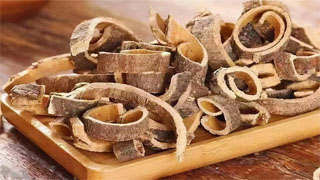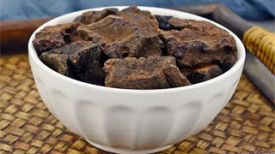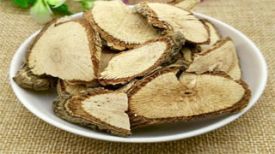
1. Alias
Night bark, night bark, and acacia bark.
2. Plant morphology
Deciduous trees. The bark is gray brown, and the small branches are angular. Two feather shaped compound leaves, with one glandular spot at the base of the total petiole and one glandular spot at the topmost pair of feather nodes; 10-30 pairs of small leaves, sickle shaped oblong, with extremely skewed sides; Leaves fall early. The head shaped inflorescence forms a conical inflorescence at the end of the branch; Corolla funnel-shaped, 5-lobed; The stamens are numerous, the filaments are slender, the upper part is light red, and the base is connected. The pods are flattened and strip-shaped. The flowering period is from June to July, and the fruiting period is from August to October.
3. Origin distribution
Born on mountain slopes or cultivated. Mainly produced in Hubei, Hebei, Henan, Shaanxi and other places.
4. Harvesting and processing
Peel the bark in summer and autumn, tie it up, and dry it in the sun.
5. Characteristics of medicinal herbs
Curled cylindrical or semi cylindrical. The outer surface is gray brown to gray brown, with dense and obvious elliptical transverse pores, brownish red, and the inner surface is light yellow brown or yellow white, smooth. Hard and brittle in texture, easy to break, with a fibrous sheet-like cross-section. The aroma is slightly fragrant, the taste is light, slightly astringent, and slightly tongue teasing.
6. Sexual Taste Returning to the Classics
Flat in nature, sweet in taste. Guixin Meridian, Liver Meridian, and Lung Meridian.
7. Effect and Function
Relieve depression and calm the mind, promote blood circulation and reduce swelling. Belonging to the subcategory of tranquilizers, it is a type of heart nourishing and calming medicine.
8. Clinical application
Use 6-12 grams. Apply an appropriate amount topically and adjust the application after grinding. Used to treat restlessness, depression, insomnia, lung abscess swelling, and traumatic injuries. Modern treatment for restlessness, depression, and insomnia.
9. Pharmacological research
Has anti fertility, anti allergy, and anti-tumor effects.
10. Chemical composition
Containing chemical components such as tannins, flavonoids, saponins and their glycosides, volatile oils, sterols, organic acid esters, glycosides, etc.
11. Usage taboos
Patients with ulcer disease and gastritis should take it with caution, and those who sweat due to wind and heat, and those who do not sleep due to external factors should avoid taking it.
12. Compatibility prescription
① Treatment for restlessness and insomnia: 9g of acacia bark and 15g of night wisteria. Boil it in water. (Zhejiang Medicinal Plant Chronicles)
② Treating cough with slight heat and restlessness, it is a lung abscess: a large patch of acacia skin on the palm. Cut finely, add three liters of water, boil one liter, and take three portions. (Twilight Soup in "A Thousand Gold Prescriptions")
③ Treating lung abscess without tightening the mouth for a long time: Acacia bark and white hawthorn, both of which are fried and taken together. (Hehuan Drink from "Jingyue Quanshu")
④ Treatment for night blindness: 9 grams each of Acacia bark and Thousand Layer Pagoda. Boil it in water. (Qingdao Herbal Medicine Handbook)
⑤ To treat muscle and bone damage caused by beating and throwing: 12g of dried acacia peel (stir fried, finely ground), add 3g of musk and 3g of frankincense each. Take 9 grams each time, adjust to warm wine, and take when not hungry or full. (Continued Techniques)
⊙ The content of the article is for clinical reference only. Non TCM professionals are not allowed to test drugs.


